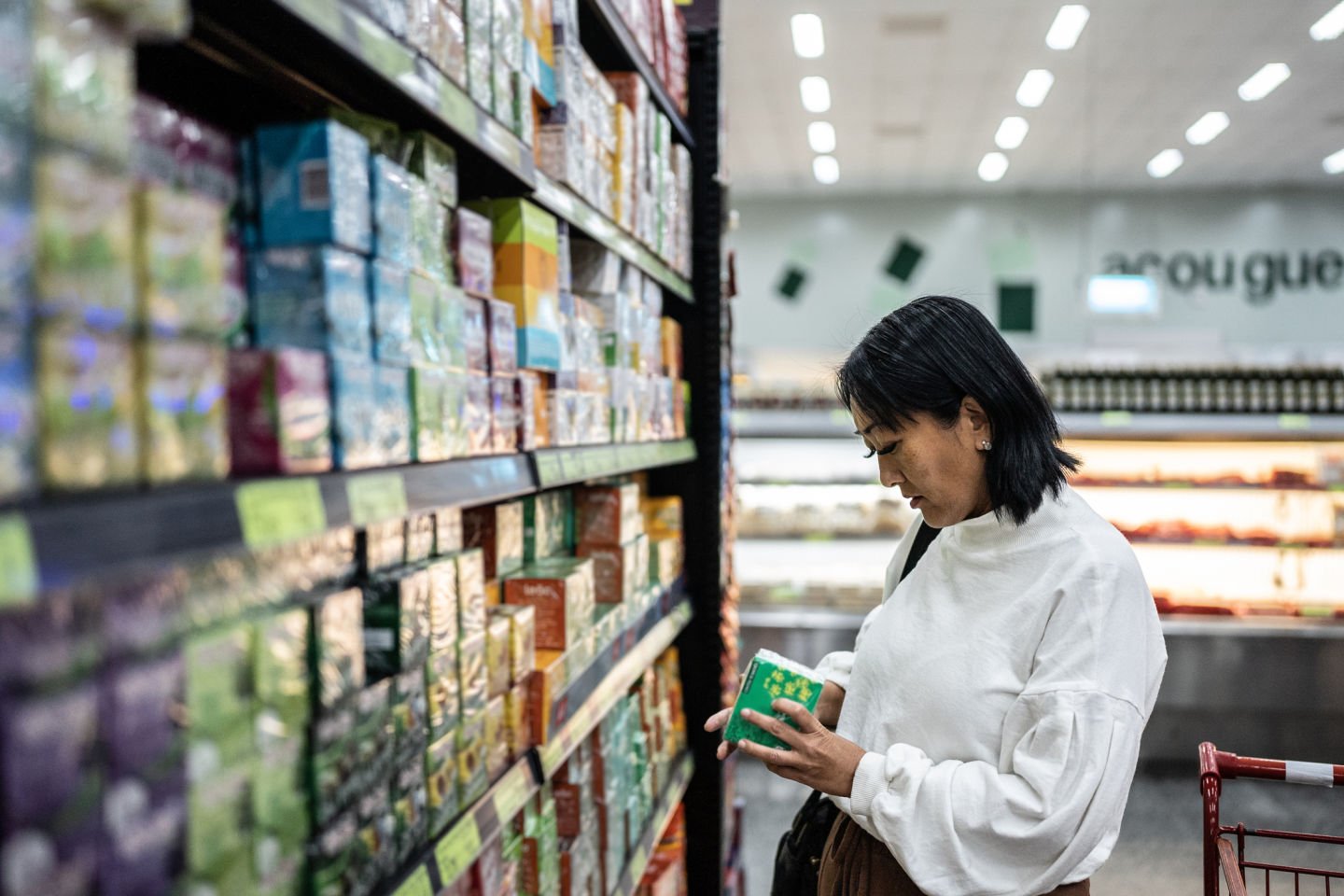Unit pricing cuts your grocery bills – so why is it so difficult?
Shoppers claim supermarkets are creating a barrier to savings.

Key Points
- A CHOICE survey reveals 80 per cent of people who are aware of unit pricing use it regularly to save at the supermarket.
- Many people still have trouble because of the way supermarkets display unit pricing information.
- Choosing supermarket own brands and looking for special offers are also seen as ways to get more value in your grocery shop.
Did you know that supermarket shelves contain a “hidden” code that can help us find the best deals on groceries?
Small text on the product labels, underneath the price of the item, tell us the cost, for example, per 100g of the product – and knowing that amount can save you a lot of money.
Unit pricing was introduced in 2009 to help people find the cheapest option when shopping. Supermarkets of more than 1000 square metres and online stores are required to provide unit prices for all packaged grocery items.
Tips on getting best bang for your buck
When asked what they thought was the best way to get value for money in their grocery shopping, 23 per cent of CHOICE respondents chose comparing unit prices.
Choosing items on sale was the most popular option (38 per cent) and the third most popular was buying own-brand products (20 per cent).
44 per cent of shoppers use unit pricing to reduce their grocery spending.
When asked the best way to get value for money when grocery shopping:
- 38 per cent say choosing items on sale
- 23 per cent say unit pricing
- 20 per cent say buying supermarket own-brand products
The unit pricing code, enforced by the ACCC (Australian Competition and Consumer Commission), requires that the unit price must be prominent, in close proximity to the selling price, legible and unambiguous.
In a recent survey by consumer advocate CHOICE 1,008 grocery shoppers were asked to look at product images and say which was the best value for money.
When shown images without unit pricing, only 60 per cent of shoppers picked the best-value product. When unit pricing was included, that jumped to 74 per cent.
CHOICE says unit pricing is the best way to get value for money and is superior to these other traditional ways of saving:
buying at sales
special offers
supermarket brand rather than the national brand
the biggest size
loose not packaged
frozen not fresh.
However, CHOICE says unit pricing is the only tool that covers all of the many value comparisons you want to make.
A unit price shows how much the product costs using a standard unit of measurement.
The standard unit of measurement used depends on the type of product. Units may be by weight, volume, length, area or number.
Some examples of standard units are:
- Beef: price per kilogram
- Laundry detergent: price per litre
- Avocados: price per avocado.
In this example, the first container of laundry detergent is better value. Although the selling price is more, the price per litre is less.
The CHOICE survey found 71 per cent of people encountered issues with the unit pricing provided:
The unit price was not always displayed
It was difficult to read for reasons such as the text being too small, and
The unit pricing information was obstructed or covered up by another label.
Did you know?
In the 12 months to September 2022 the cost of fruit and vegetables rose 16.2 per cent, bread and cereal products rose by 10 per cent and the price of meat and seafood increased by 7.3 per cent.
It isn't just instore that shoppers experience difficulties with unit prices on groceries.
CHOICE found one in four online shoppers who use unit prices found it difficult to compare products of interest side-by-side, and one in five were unable to sort or search by the lowest unit prices.
There were also problems caused by the use of different units of measurement to show the unit price for the same type of product.
If you think a price display is misleading, the ACCC advises that the first step should is be to contact the business to explain the problem.
If that doesn't work, you can report misleading behaviour to the ACCC.
Information about the Australian Consumer Commission’s Unit Pricing Code can be found here.








